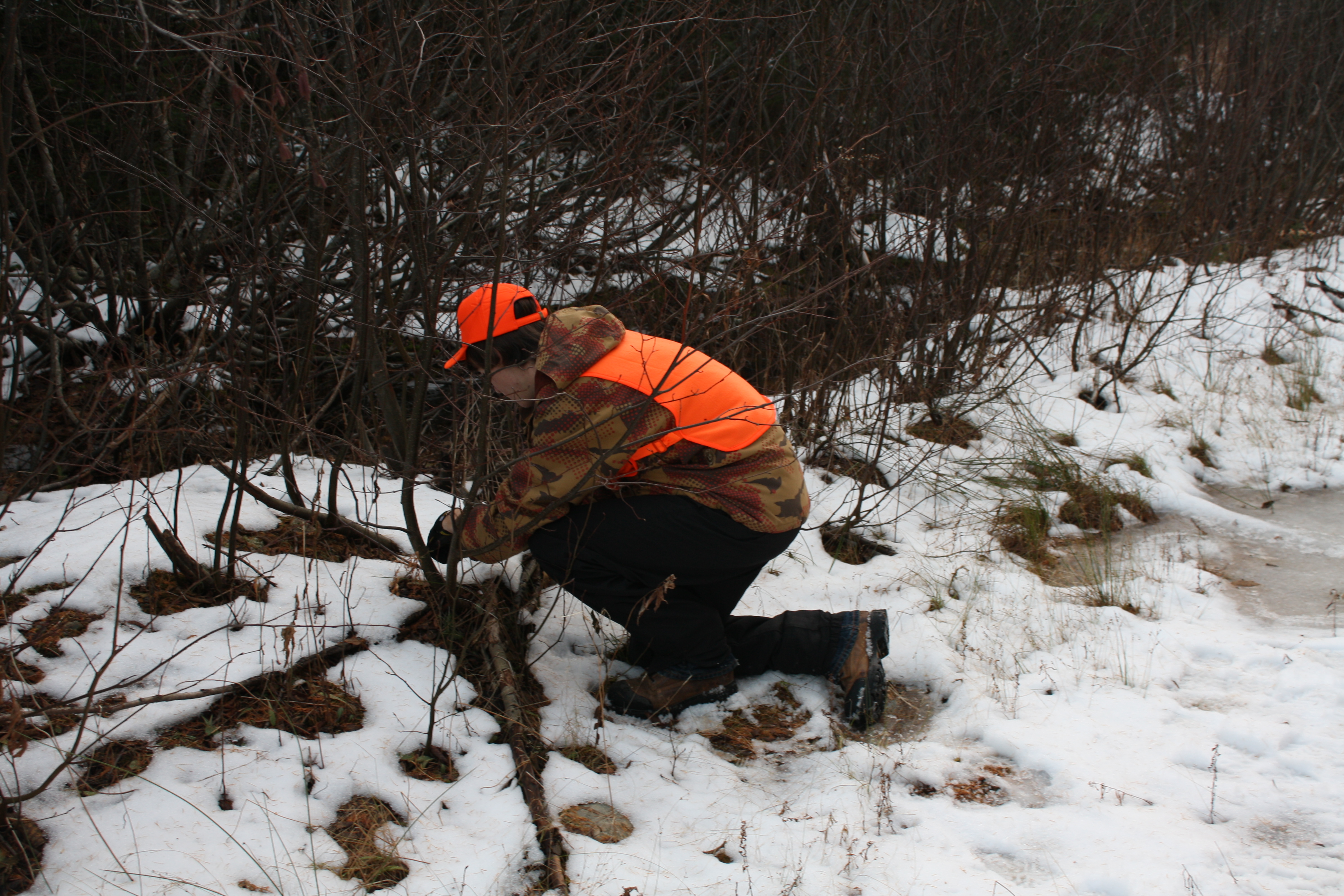Since the 2008-09 hunting season, 22-gauge brass wire and 6-strand picture cord replaced stainless steel as the legal snare wire available for small game on the island of Newfoundland. These provisions were implemented after considerable review by wildlife biologists and public input concerning by-catch of non-target species, particularly the Newfoundland marten, and other incidental wildlife and domestic animals. Field testing of these wire types confirmed they were effective in retaining hares at least 75 per cent of the time. These wires will also release marten 90% of the time (Fisher and Twitchell 2004).
22-gauge brass wire appears to be the most commonly used wire type that is purchased by small game hunters as opposed to 6-strand picture cord. A major concern with brass wire since its implementation has been determining the difference in the quality of wire available on the market and what is sold as snare wire by retailers throughout the province. Many 22-gauge brass wire manufacturers sell products to wholesalers and retailers that do not necessarily meet minimum retention thresholds due to their manufacturing properties. Research has shown that the best products have a composition of 100 per cent brass and has better performance with respect to capturing small game, specifically snowshoe hare.
In an effort to assist small game hunters with finding the best available 22-gauge brass wire for snaring, the Department of Fisheries and Land Resources will begin providing product manufacturing information to all small game licence vendors, as well as guidelines for selling snare wire on behalf of the department.
When purchasing snare wire it is recommended that that hunters request 100 per cent brass wire when buying from a local vendors. In future a list of vendors who are selling 100 per cent brass wire products will also be made available on this website.
The Department of Fisheries and Land Resources realizes the importance of small game snaring to the hunting public and its history as part of Newfoundland and Labrador’s hunting heritage. Responsible harvesting and snaring practices will help ensure that these activities continue for future generations.
